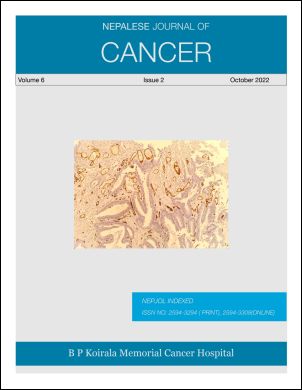Ultrasound of Lung
DOI:
https://doi.org/10.3126/njc.v6i2.48770Keywords:
lungs, ultrasound, pneumothorax, effusion, lung diseasesAbstract
Ultrasound (US) is a very common tool in today’s clinical practice. Lung ultrasound was popularized by Daniel Lichtenstein, a French intensivist. He noted that sonographic artifacts during lung ultrasound could differentiate between various lung diseases and subsequently noted the ultrasound’s ability to differentiate various diseases. He also popularized the points of probe placement and various signs and lines in lung ultrasound, which includes the A line, B-lines, Lung sliding sign, seashore sign etc. based upon which the BLUE protocol was introduced. Lung ultrasound has rapidly gained popularity over the past 10 years, mainly due to its wide availability in emergency and trauma settings, lack of radiation exposure, easy availability and cost effectiveness. Although there are limitation to Lung ultrasound, like being user dependent, limited role in surgical emphysema, in severely obese patients, and CT still remains a gold standard for diagnosis of lung pathologies, ultrasound has shown to be equally effective or even better in diagnosis and management of patients in critically ill patients, where obtaining CT scan or other imaging technique is not feasible. Hence, lung ultrasound is a must have tool and knowledge and skills related to lung ultrasound should not only be limited to Radiologist, but also to all thoracic surgeons and physicians involved in managing critically ill patients.
Downloads
Downloads
Published
How to Cite
Issue
Section
License
Copyright (c) 2022 Nepalese Journal of Cancer

This work is licensed under a Creative Commons Attribution 4.0 International License.
This license lets others distribute, remix, tweak, and build upon your work, even commercially, as long as NJC and the authors are acknowledged.
Submission of the manuscript means that the authors agree to assign exclusive copyright to NJC. The aim of NJC is to increase the visibility and ease of use of open access scientific and scholarly articles thereby promoting their increased usage and impact.




